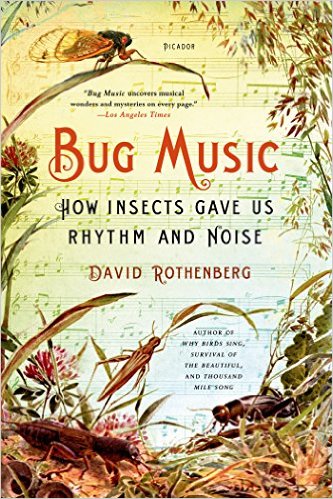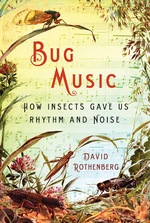Bookshelf
Bug Music: How Insects Gave Us Rhythm and Noise
In the spring of 2013, the cicadas in the Northeastern United States emerged from their seventeen-year cycle – the longest gestation period of any animal. Those who experienced this great sonic invasion compared their sense of wonder to the arrival of a comet or a solar eclipse. This unending rhythmic cycle is just one unique example of how the pulse and noise of insects has taught humans the meaning of rhythm, from the whirr of a cricket's wings to this unfathomable and exact seventeen-year beat.
Bug Music is the first book to consider the radical notion that we humans got our idea of rhythm, synchronization, and dance from the world of insect sounds that surrounded our species over the millions of years over which we evolved. Bug Music continues Rothenberg's in-depth research and spirited writing on the relationship between human and animal music, and it follows him as he explores insect influences in classical and modern music, plays his saxophone with crickets and other insects, and confers with researchers and scientists nationwide.
This engaging and thought-provoking book makes a passionate case for the interconnectedness of species.
Featured On Episode #230
Bug Music
This week, we’re jamming to the rhythm of the insect world. Desiree speaks to musician and philosopher David Rothenberg, author of the book Bug Music: How Insects Gave Us Rhythm and Noise, about the possible insect inspirations for human music. And she’s joined by entomologist Gwen Pearson, A.K.A. Bug Girl, to talk about the interesting ways that insects make sounds with their bodies.


